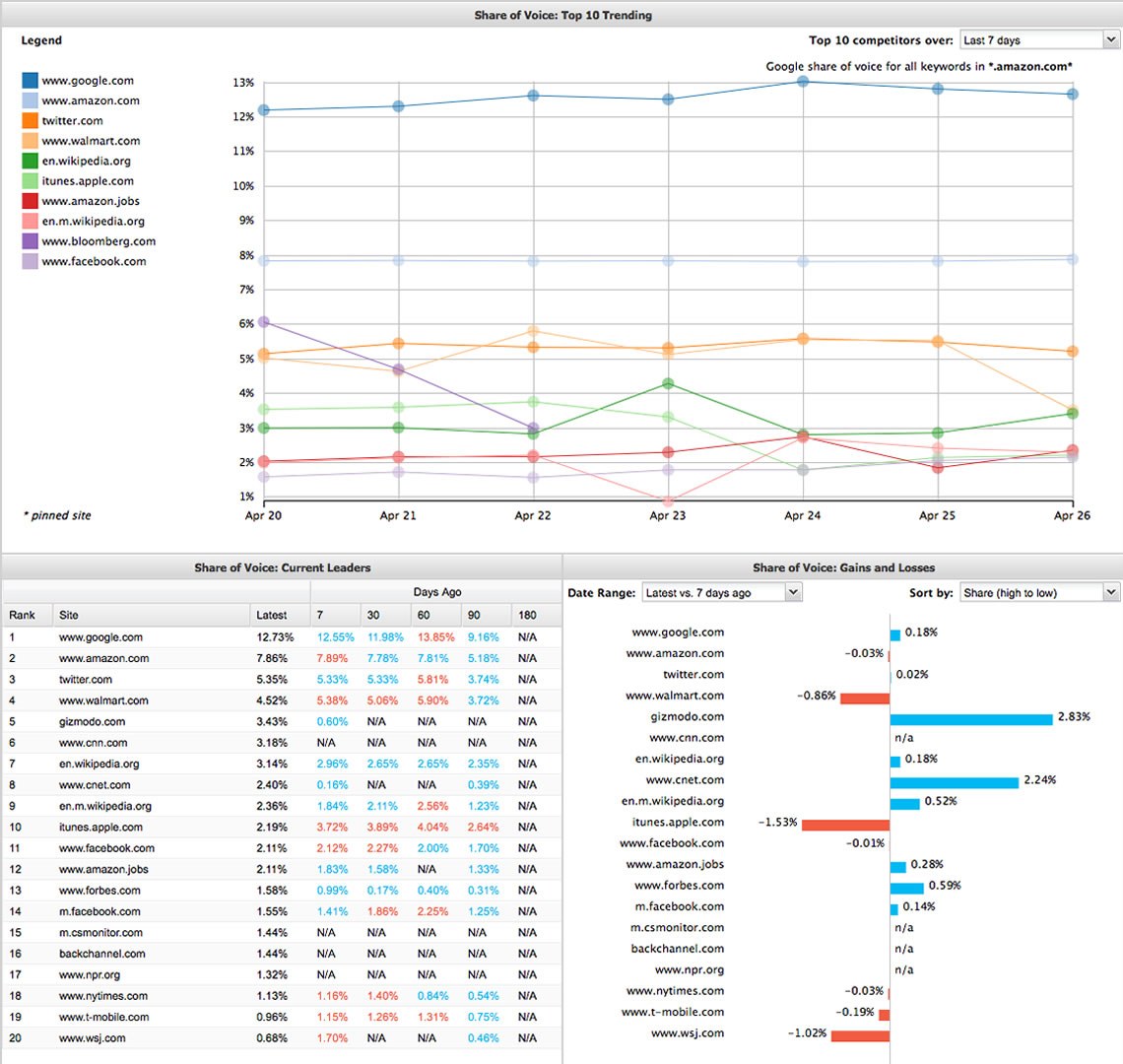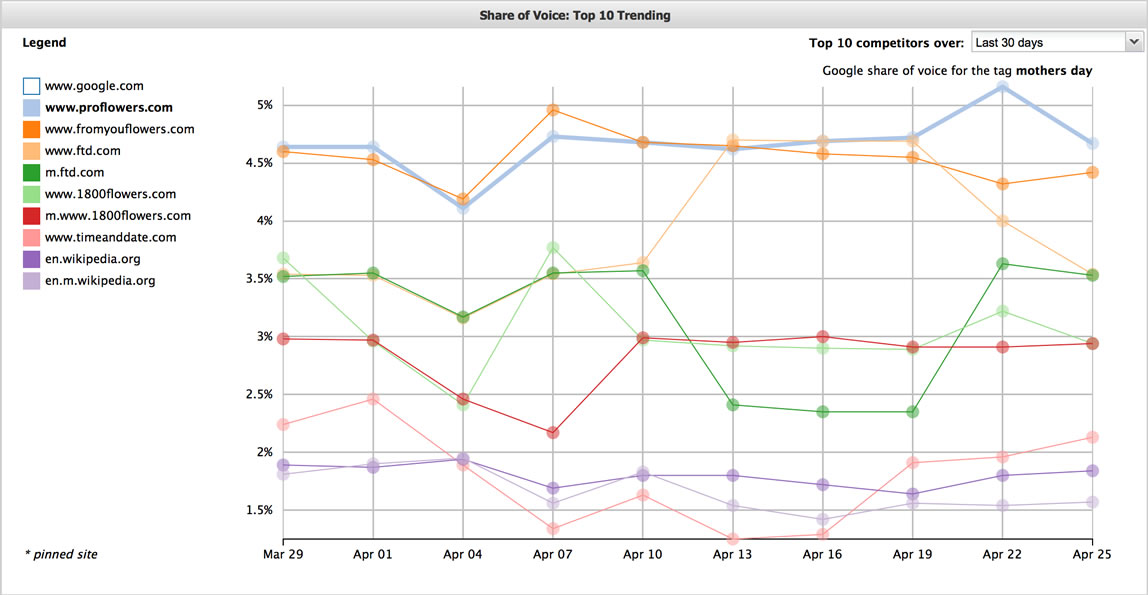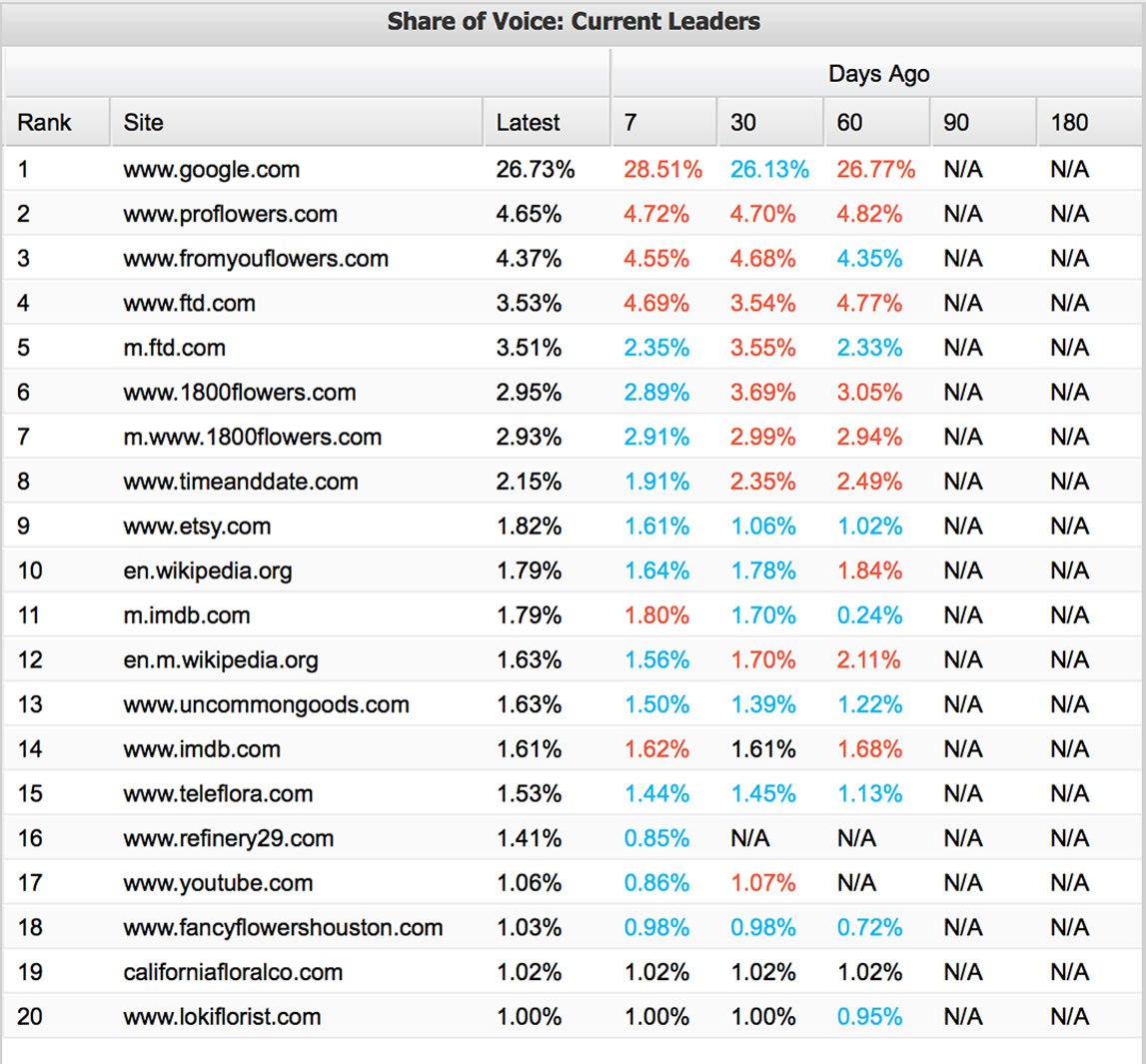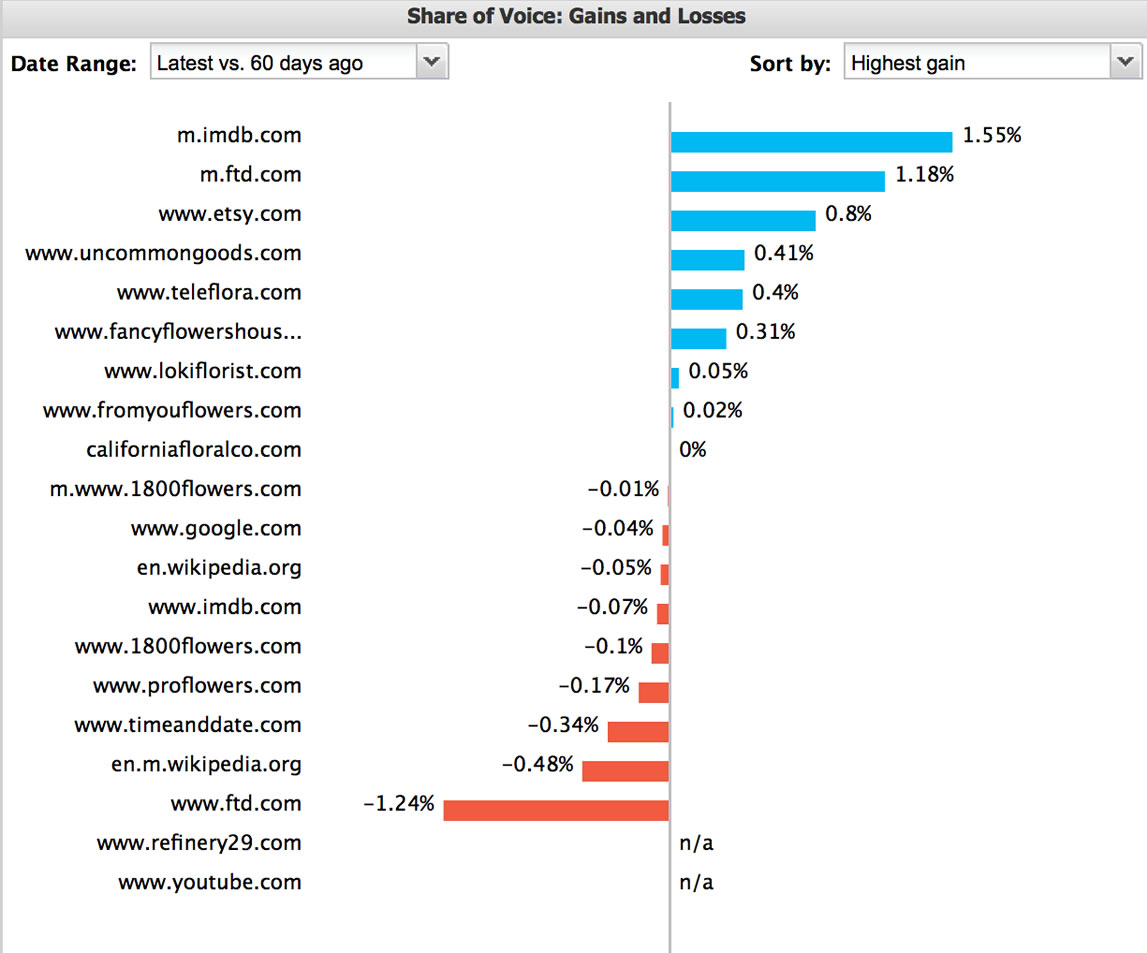No more guessing who the competition is, how you measure up, or whether you’re on the right tracking path — STAT’s share of voice tells all.
Ready to zero-in on your true SEO competition? Starting today — with the launch of STAT’s sweet new share of voice feature — it just got a whole lot easier.
STAT clients can now quickly and easily track organic share of voice to see who’s winning the long game, who’s losing ground, and who’s becoming a legitimate threat.
Survey your competitive landscape
Quick, easy, and actionable insights are now at your fingertips.
In a single glance, clients can map their brand exposure and unlock the infinite stories in their SERP data.
SEOs, SoV, and the SERP
As advertisers shifted their dollars away from traditional marketing (like print and TV) over to online channels, the SERP basically became the podium in American Gladiator where jousting competitors would knock each other from the top spot and claim victory.
The SERPs are a battleground
We’re here to make sure you don’t get knocked out.
Since SERPs are where the action is, SEOs are increasingly (and rightfully) finding themselves with a seat at the marketing table. And as their involvement becomes greater, so too does the need to incorporate share of voice into their analytics toolbox to report on their brand’s true SERP visibility.
But calculating share of voice, whether it’s measuring columns in a newspaper or adjusting to search engine changes, is incredibly complex and often time-consuming. Thankfully, STAT’s now going to do the work for you.
CALCULATING A SHARE OF VOICE PERCENTAGE
Our super smart dev team has been working tirelessly on a share of voice metric that gives you an accurate representation of who owns the most eyeballs for a given keyword set.
To calculate share of voice, we start by weighting SERP rankings against a rank-scoring or click-through-rate model. (This is fully customizable within STAT to suit your preferred method.)
Let’s use the default rank scores as an example. Sites that rank in position one are given a score of one, position two gets a score a 0.9, three gets 0.8, and the rank continues to decrease the further down the SERP we go. Position one gets the highest score because it’s the most clicked result.
We then factor in search volume — because a top ranking keyword with a high search volume wins more views than a top ranking keyword with little-to-no traffic.
The final share of voice for each site is expressed as a percentage of the total search volume for that keyword set. So if your share of voice is 25 percent, you’re winning 25 percent of the eyeballs for a given keyword set.
NAVIGATING YOUR share of voice
Let’s take a look at each of the three share of voice sections within STAT’s Competitive Landscape tab.
With Mother’s Day coming up on May 8, the flower wars are in full swing, and nowhere is this more evident than in the SERPs, giving us a perfect (and timely) example to use.
Share of Voice: Top 10 Trending
Here we can see the Top 10 Trending graph for a Mother’s Day keyword set over the past seven days. Google had claimed over 25 percent of the top 10 because of universal results (shopping, knowledge graph, etc), so we easily de-select them in the legend to focus in on the remaining results.
Who's got Mother's Day wrapped up?
www.proflowers.com is leading the charge.
What do we see? Apart from Google, www.proflowers.com effectively owned this seven-day period for share of voice, and www.ftd.com took a significant hit on April 20. Coming in at the bottom of the list is m.imdb.com, which is strange since we all know that site isn’t slinging carnations, but it just so happens that a new Jennifer Aniston movie called Mother’s Day is in theatres now.
So how much of a threat is IMDB for Mother’s Day traffic? Let’s use the drop-down menu to see the competition over a 30-day window.
Let's expand the competitive horizon
See your top ten competitors over 7, 30, 60, 90, 180, or 365 days.
IMDB has now fallen off the chart, indicating that it may be more of a flash in the pan than a legitimate, long-term emerging competitor. SEOs for these online flower shops may want to keep an eye on the situation though.
By using aggregate data over different periods of time, the Top 10 Trending paints a very clear picture of your true competitors. You can also add up to 10 pinned sites — domains that you’d like to keep on the graph, even if their share of voice doesn’t earn that top 10 spot. (Note: We didn’t pin any additional sites for this data set, so you won’t see any sites with an asterisk in the legend.)
And the best part? You can explore this data at the site, data view, or tag level for the last 7, 30, 60, 90, 180 days, or even the full year.
Share of Voice: Current Leaders
If you’re keen to see even more, scroll down in the Competitive Landscape tab and take a boo at the Current Leaders board. Here you’ll see unquestionable insight as to whether competitors are gaining or losing ground over time.
In the first column, you get the latest share of voice, smoothed out over a two-day period, for each site. For the next column, we travel back in time to see how these leaders were performing seven days ago. Then we do this again for 30, 60, 90, and 180 days. The best part? Simply right-click and export up to a full year of data — the top 30 sites with share of voice, every single day.
Let’s check out the top 20 leaders (and any pinned sites) for our Mother’s Day share of voice.
It's like your very own SEO crystal ball
Here we see how the top 20 leaders are faring.
Like we said earlier, Google clearly owns this keyword set. Over the past 60 days, they’ve consistently maintained over 25 percent share of voice. A quick look at the keywords table reveals that this is indeed courtesy of universal results.
You can see that www.proflowers.com in position two has a latest ranking of 4.65 percent share of voice. Pretty good, right? But 60 days ago, they were at 4.82 percent share of voice. Because their latest ranking is worse than it was 60 days ago, we highlight that 60-day number in red. It showcases that their share of voice has dipped.
In position three, www.fromyouflowers.com currently has 4.37 percent share of voice. Here they’re doing marginally better than they were 60-days ago, at 4.35 percent, so we highlighted that number in blue to indicate their present improvement.
And would you look at that? Over the past sixty days, IMDB has gone from 0.24 percent share of voice up to 1.79 percent. Apparently people still like Jennifer Aniston.
Share of Voice: Gains and Losses
So just how much is Rachel from Friends and her new movie ruining the lives of online florists across the United States? Let’s look at the Gains and Losses graph.
Competitor gains and losses
Select your time window and sort by highest gain, highest loss, or share of voice.
This chart maps the difference between your competitors’ current share of voice and where they stood 7, 30, 60, 90, or 180 days ago. It gives you an excellent visual representation of the gains (blue) and losses (red) being made over time.
Above, we can see that in the last 60 days, the mobile IMDB site is kicking some serious butt for share of voice. Way to go, Jennifer.
Knowing that this site is continuing to snag Mother’s Day traffic, some SEOs may be inclined to take a good look at IMDB’s content tactics and link-building strategies. They may not be a true competitor in the flower business, but it never hurts to do a little investigating since they’re obviously doing something right.
Ready to get started?
We’re really excited about this new feature, and we’re certain that STAT clients are going to find it invaluable. In fact, when you log into your account, you’ll find 90 days’ worth of your historical share of voice data already sitting in the Competitive Landscape tab.
So what are you waiting for? Go experience it for yourself, and don’t forget to share your thoughts and feedback.
Not quite ready to dive in? Why not watch our STATcast and get the tour from our CEO, Rob Bucci.







